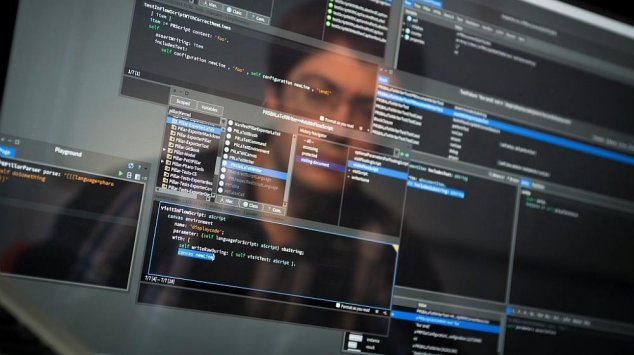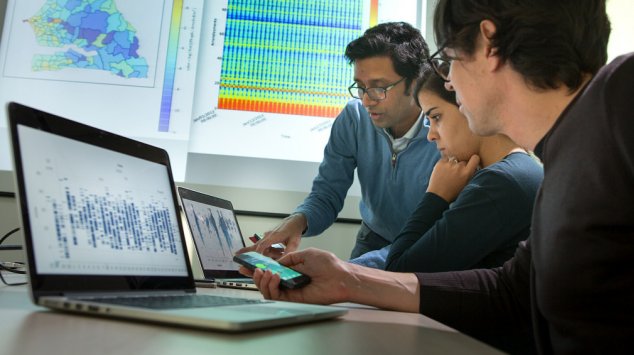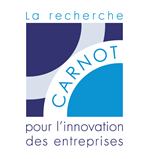Security
The security sector covers all stakeholders involved in developing security products and services designed to protect the government, business and private citizens from malicious acts and their effects. It deploys solutions or systems designed for observation, analysis, detection, access control, protection, alert, intervention or communication in physical and/or logical (digital security) domains. The sector includes physical security products and solutions.
Carnot Institutes strongly involved
Examples of partnerships with companies in the sector
Latest fingerprint reader for a more accurate and secure identification
Partnership Télécom & Société numérique Carnot Institute - IDEMIAThe Télécom & Société numérique Carnot Institute and IDEMIA teams have developed, over a 18-month collaboration, a device which analyses and compares the external and the internal fingerprints.
Latest fingerprint reader for a more accurate and secure identification
Supporting Innovation
Since their general application in 2003, fingerprint readers have been the target of increasingly sophisticated fraud attempts.
At the same time, a few ‘genuine’ but too damaged fingerprints were not properly recognised by these devices.
To overcome these two subjects Telecom SudParis* researchers relied on the so-called optical coherence tomography (OCT) imaging technique. They used the correlation between the external fingerprint, consisting of an embossed outer layer, and the internal structure of the fingertip skin combined with the sweat pores layout.
The relevant biometric data acquisition is performed by the BioDigital device through a contactless light beam. Incoherent diagrams alert on fake finger prints.
Any damaged-skinned eroded fingers are offset by a complete and reliable sub-cutaneous print.
*An entity of the Télécom & Société numérique Carnot Institute.
copyright : IDEMIA
The client needs
IDEMIA, a recognised leading player in the field of biometric identification, was born from the merger between Oberthur Technologies** and Morpho+ in 2017.
To build on and consolidate its position as a global leader, the company’s 13000 employees – including 2000 R&D engineers – have to be able to anticipate any fraudulent attempts at biometric data.
To determine, to this end, the effectiveness of the BioDigital solution conducted by Bernadette Dorizzi and Yanek Gottesman from Télécom SudParis, IDEMIA made a specific algorithm and a reference database available.
The first finding was that Biodigital improves indeed the precision and reliability of fingerprint comparison with a near 100% false print detection rate.
A relevant patent has been registered and close collaboration between the teams made it possible to finalise a product design for a contactless fingerprint reader based on such patent.
** French-based specialist in digital security
+ French-based specialist in security and identity solutions
Partnership
The Télécom & Société numérique Carnot Institute incorporates Télécom SudParis, an engineering school whose Cybersecurity platform stands out for its ability to enable various realistic situations to be simulated.
The BioDigital technology was developed within the Biometrics unit. It makes it possible to obtain a high-quality image reconstruction of the internal fingerprint once light wavelengths are projected across the finger pulp layers.
The specific lighting into the fingers sends various echoing information to the reader depending on depth. These data allowed to reconstruct a high-resolution 3D image of the internal fingerprint, which is then compared with the embossed external fingerprint.
Between these two fingerprints, the additional rebuilt of the sweat pores network makes the process safer.
The Carnot teams have really taken up the technical challenge and transferred the technology to IDEMIA, thus improving the latter’s competitive advantage in the field of ‘Augmented Identity’.
New MultiX X-ray spectrometer detects nitromethane from water
Partnership Leti Carnot Institute - MultiXThanks to Leti’s various skills, the combination of reduced stage security inspection process and travel safety is attracting both the airport authorities and other sector industries.
New MultiX X-ray spectrometer detects nitromethane from water
Supporting Innovation
How can we differentiate water from nitromethane in liquids? While conducting R&D to resolve such delicate matter, a Grenoble Isère-based business realised that it was able to concretely fulfil the issue of heightened security checks at airports. The use of the MultiX X scanner is becoming routine procedure to discriminate liquids in baggage. The main innovation rationale behind such technology is to fast-scan via efficient photodetection all screened photons rather than just a fraction passing through the scanned item. The detection sensor is an unparalleled source of information which has driven the American Authorities at US airports to use such technology to improve detection of explosives in hand-held baggage.
The client needs
MultiX has been utilising X-ray spectrometric detection technology since 2010 for non-destructive inspection and security screening to identify substances.
Their teams, widely dedicated to R&D, have given themselves the objectives of providing a reliable solution with reference to baggage screening that can be directly integrated to industry. To succeed in this increasingly competitive market, MultiX needed a partner capable of providing a major technological advance to offset the competition. The SME with 18 employees was able to develop in concert with Leti Carnot institute (Cea Tech) the entire workflow for processing X-ray spectrometry data. Such guarantee ensures detection of explosive compounds while making easier the traveler’s experience.
Partnership
The CEA LETI Carnot Institute has strived to maintain world-class imaging, notably health care radiography, expertise. The teams’ ability for spectrometric measurement of gamma- and X-ray using high quality sensors paired with information extraction algorithms have consequently been shared with their MultiX counterparts. Spurred on by Leti regarding their patent management, the SME has the competitive advantage to deal with faster development while creating jobs to support international business. The ME100 detector easily integrates into the clients’ scanning systems. Thus benefiting key security operators at sensitive locations or places with industrial activity.




